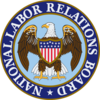Office of Inspector General - General Audits
The Inspector General Act of 1978, as amended, gives the Office of Inspector General (OIG) authority to conduct audits of all NLRB programs and operations.
How are audits selected?
The OIG maintains a list of organizations and programs at the NLRB that may be subject to audit. The list is reviewed annually to ensure that it adequately inventories Agency operations and to assist in formulating the OIG annual audit plan. The OIG also solicits input from management on potential audits.
The annual audit plan reflects the best judgment of the staff of the OIG as to what programs and operations should be audited. Criteria for inclusion in the plan includes: time since the last audit; vulnerability to waste, fraud and abuse; importance of the program or operation to the Agency; funding level; and input from Congress and the Agency.
How is management notified of an audit?
Prior to starting an audit, the OIG will telephone the Agency official responsible for the program being audited to arrange an entrance conference. An engagement letter will be sent to the head of the Division or Office (auditee). The engagement letter provides information including: the audit's general objectives; the estimated start date; staff assigned; and the date, time and location of the entrance conference.
What are the major steps in an audit?
Immediately prior to audit initiation, OIG personnel will meet with the auditee in an entrance conference.
The purposes of the conference are to:
- introduce the auditor-in-charge and the other assigned personnel;
- discuss the purpose, scope and principal features of the audit, including the estimated completion date;
- establish agreeable working relationships, including arrangements for working space and access to records and files;
- identify who will serve as the OIG point of contact during the audit; and
- provide an opportunity for the auditee to request specific audit coverage in relevant areas.
Detailed audit work commences after the entrance conference and is performed in accordance with an audit guide or program that documents procedures for accomplishing the audit objectives. These procedures include:
- identifying and reviewing applicable laws, regulations, and policies and procedures;
- collecting evidence by examining records and files, performing physical verifications, observing operations, and interviewing staff members; and
- performing all other actions necessary to gain a full understanding of the program or operation.
This phase of the audit process requires some time and effort by the auditee to answer questions, provide access to files, and prepare information requested by the auditors. The auditors are fully aware of the need to keep up with regular workload and will attempt to limit requests for information, records, and assistance to the minimum necessary to complete the audit.
Upon completion of this phase, the auditors will summarize findings and recommendations in a discussion document report that is issued to the auditee in advance of the exit conference. The discussion document is issued to inform the auditee of specific conclusions reached during the audit.
An exit conference is held with the auditee to discuss the findings and recommendations developed during the audit. The auditee will be asked to comment on the validity of the facts presented and the reasonableness of the audit conclusions and recommendations, and seek clarification or additional information concerning the results of the audit.
How are auditee comments solicited and handled?
A draft audit report is issued to the auditee after considering comments and concerns expressed at the exit conference. The auditee will have about 30 days to provide written comments on the draft audit report. Copies of the draft audit report will be provided to the Board, General Counsel, and other management officials as appropriate. Management may provide a copy to the union for information purposes.
The OIG will analyze any comments received to determine if the findings and recommendations should be maintained as written in the draft report, modified, or deleted. The final audit report will be issued to the Division or Office head, with a copy to the Chairman and General Counsel. The auditee's written comments will be attached in their entirety as an appendix to the final audit report. Final audit reports are public documents. They will be posted on the IG web-site and made available for distribution upon request.
What follow-up action is required on the recommendations?
The transmittal memorandum for the final audit report will advise the auditee to develop an action plan for each recommendation with which there is agreement and submit it to the OIG within 60 days. Ideally, the action plan will set forth each specific action planned to implement the recommendations and the schedule for their implementation. Resolution is achieved when the OIG formally agrees with the action plans.
OIG will agree or disagree, in writing, with the proposed actions. If OIG disagrees with the action plans, the auditor will attempt to informally resolve the matter with the auditee. However, if agreement cannot be reached, the matter will be referred to the appropriate Audit Follow-up Official who will make a final decision on the actions to be taken.
Who is the Audit Follow-up Official?
The NLRB has two Audit Follow-up Officials. The Executive Secretary serves for the Board side and the Deputy General Counsel serves for the General Counsel side. The Audit Follow-up Officials have personal responsibility for ensuring that (1) systems of audit follow-up, resolution, and corrective action are documented and in place, (2) timely responses are made to all audit reports, (3) disagreements are resolved, (4) corrective actions are actually taken, and (5) semiannual reports are sent to the head of the agency.


